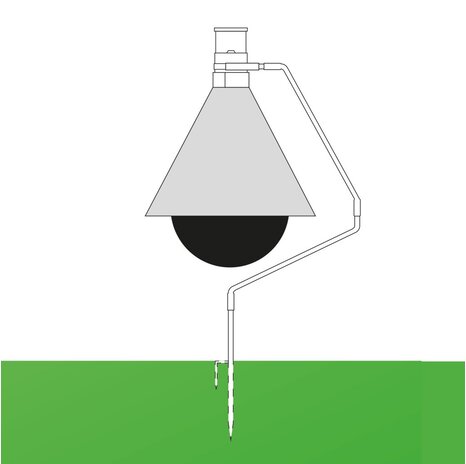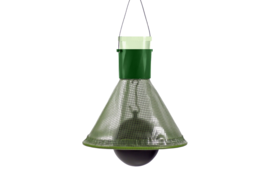Horse flies are a constant nuisance, especially in the period May - October. When they feed on blood, their aggressive stings are considered very painful. For both animals (such as horses, cows) and people, it is not a pleasant feeling. What you need to get rid of these horseflies and wasps is a horsefly trap. This horsefly trap, also known as a wasp trap, catches large numbers of flies and other insects.
Main Features
• Including galvanized steel suspension construction
• Weatherproof design
• Reduces the population of horse flies considerably
• Anti-rotation pin
• UV resistant plastic collection container
• Easy installation with integrated ground drill
• Environmentally friendly
• Ergonomic design, which leads to user-friendliness
• Effective and easy control of horse flies
• Durable and 100% natural, no chemicals
• Captures 95% of the flies
Please note: This is a product without the use of pesticides or electricity.
Most frequently asked question:
How many horsefly traps do I need? 1 horse fly trap is enough to cover an area of 10,000m2. If your area you wish to cover is larger than this, then you can always add another trap.
How it works?
A horsefly trap takes the form of a black ball that is heated by the sun and releases heat. The ball swings slowly back and forth in the wind and is taken for an animal by the horsefly, which tries to sting it. But horseflies are unable to penetrate the ball with their stings, which dazes them and causes them to fly upwards. Horseflies and wasps can only fly upwards, which means that they are caught in the trap container.
Specifications H-Trap
- Total diameter about 1.20 m
- Height: approx. 2.00 m
- Ball diameter: approx. 60 cm
- Color: black (ball), transparent plastic funnel
- Material: main mounting tube - thickness: 2 mm
- Weight: about 15 kg
- Incl. Adapter (adapter) to inflate the ball, pump, plug-clip (to remove the plug from the ball) & Metal hammer plugs
- Funnel: 1 piece
- Transport: in individual parts, must be assembled on site
How to get the most out of the trap.
- In order to maximize the success of catching the flies, set the preferred trap between the humid areas (such as ponds, river banks, etc.) and the areas where humans and animals reside.
- Place the trap(s) between these areas, placing them closer to the places where the animals are located.
- Place the trap early, preferably just before the horse flies fly in April.
- Check the traps weekly, empty or fill with soapy water if necessary.
- If the brake trap does not catch a sufficient number of flies, and you are certain that adult flies exist, change the location of the trap








